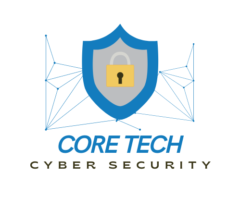In today’s digital landscape, the ability to monitor cyber threats in real-time is crucial for maintaining the integrity, confidentiality, and availability of systems and data. Real-time cyber threat monitoring provides organizations with the agility needed to respond swiftly to potential security incidents. Here’s why real-time monitoring is so vital:
1. Early Detection of Threats
Real-time monitoring enables the early detection of potential threats before they can cause significant damage. By continuously analyzing network traffic, system logs, and endpoint activities, organizations can identify anomalies and suspicious behaviors as they occur.
Why It Matters:
- Minimizes Damage: Early detection helps mitigate the impact of a threat, preventing or reducing data breaches, financial loss, and system downtime.
- Reduces Response Time: Quick identification of threats allows for faster incident response, limiting the time attackers have to exploit vulnerabilities.
2. Immediate Incident Response
Real-time monitoring tools provide alerts and actionable insights as soon as a threat is detected. This allows security teams to initiate incident response protocols immediately.
Why It Matters:
- Prevents Escalation: Immediate response helps contain and neutralize threats before they escalate into more serious incidents.
- Enhances Efficiency: Real-time alerts and automated responses streamline the incident management process, improving overall security efficiency.
3. Comprehensive Visibility
Real-time monitoring provides comprehensive visibility into all aspects of an organization’s IT environment, including network traffic, endpoint activities, and application interactions. This holistic view is essential for understanding the full scope of security events.
Why It Matters:
- Identifies Complex Threats: Comprehensive visibility helps detect complex, multi-faceted attacks that may span across various systems and data sources.
- Improves Forensics: Detailed monitoring data supports thorough forensic investigations, aiding in understanding the nature and impact of an attack.
4. Adaptive Defense Mechanisms
Real-time monitoring allows organizations to adapt their security defenses based on emerging threats and evolving attack techniques. Continuous analysis helps identify patterns and trends that can inform defensive strategies.
Why It Matters:
- Dynamic Threat Landscape: The cybersecurity landscape is constantly changing with new threats and attack vectors. Real-time monitoring ensures defenses are updated in response to the latest threats.
- Proactive Security Posture: Adaptive defenses based on real-time data help prevent future attacks and strengthen overall security posture.
5. Regulatory Compliance
Many industries are subject to regulatory requirements that mandate real-time monitoring of security events and incidents. Compliance with these regulations is critical to avoid penalties and legal issues.
Why It Matters:
- Avoids Fines: Adhering to regulatory requirements helps avoid financial penalties and legal consequences.
- Ensures Accountability: Real-time monitoring provides documentation and evidence of compliance, demonstrating a commitment to security best practices.
6. Enhanced Threat Intelligence
Real-time monitoring tools often integrate with threat intelligence feeds to provide context and additional insights into detected threats. This integration enhances the effectiveness of threat detection and response.
Why It Matters:
- Contextual Awareness: Threat intelligence adds context to alerts, helping security teams understand the nature of threats and their potential impact.
- Informed Decision-Making: Integration with threat intelligence enables more informed decisions and prioritization of responses.
7. Continuous Improvement
Regularly monitoring and analyzing security data in real-time allows organizations to continuously improve their security posture. Insights gained from real-time monitoring inform ongoing adjustments and enhancements to security strategies.
Why It Matters:
- Strengthens Defenses: Continuous improvement based on real-time data helps refine and strengthen security measures over time.
- Adapts to New Threats: Ongoing monitoring ensures that defenses evolve in response to emerging threats and attack techniques.
8. Support for Incident Management
Effective real-time monitoring supports robust incident management processes by providing timely alerts, detailed data, and actionable insights.
Why It Matters:
- Streamlines Incident Handling: Real-time data facilitates quicker and more efficient incident handling, reducing the overall impact on the organization.
- Improves Communication: Timely alerts and data support better communication between security teams and stakeholders during an incident.
Conclusion
Real-time cyber threat monitoring is a fundamental component of modern cybersecurity strategies. It enables early detection, immediate response, comprehensive visibility, and adaptive defenses, all of which are crucial for protecting against today’s sophisticated and evolving cyber threats. By prioritizing real-time monitoring, organizations can enhance their ability to defend against attacks, ensure regulatory compliance, and continuously improve their security posture.
